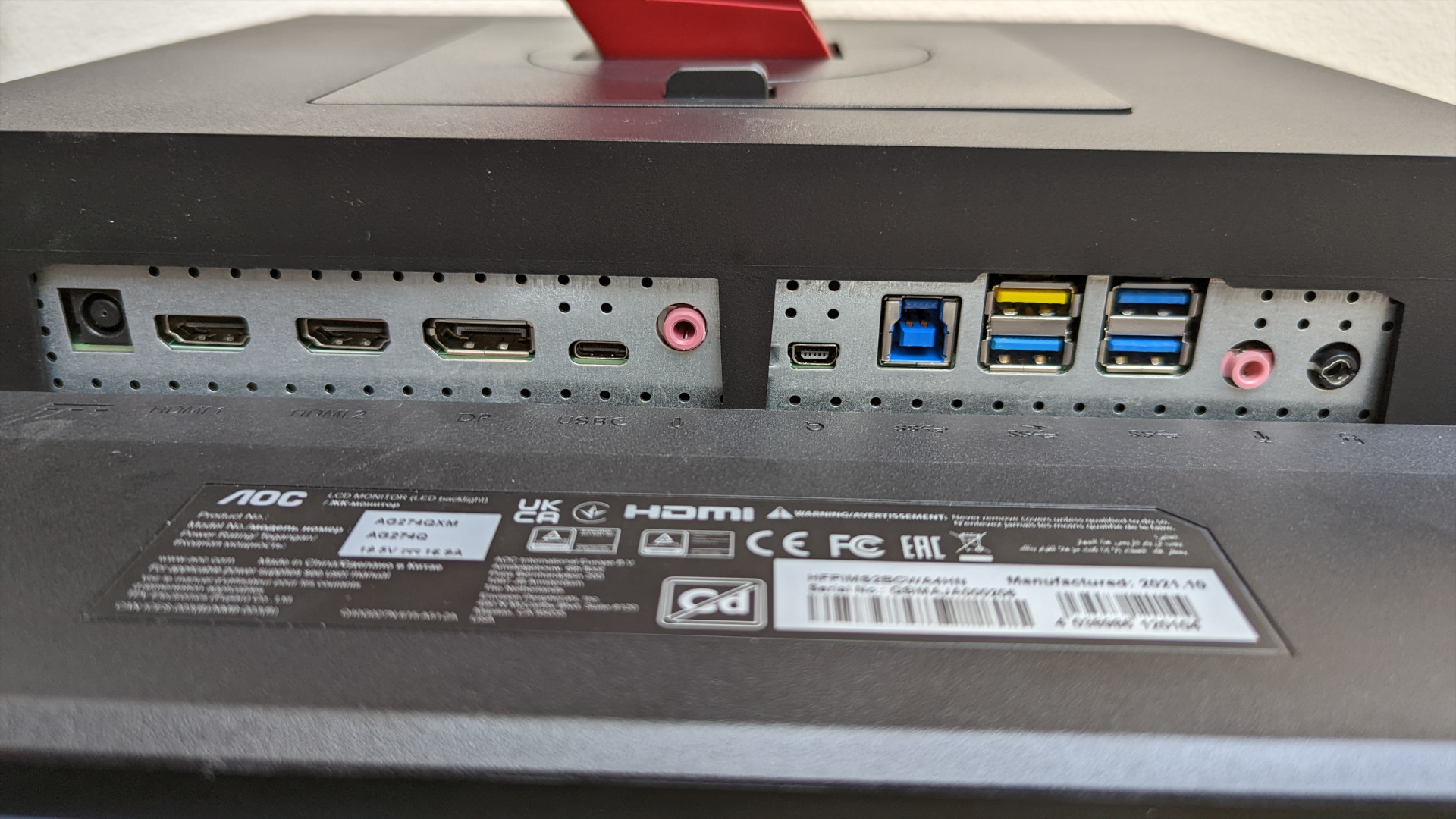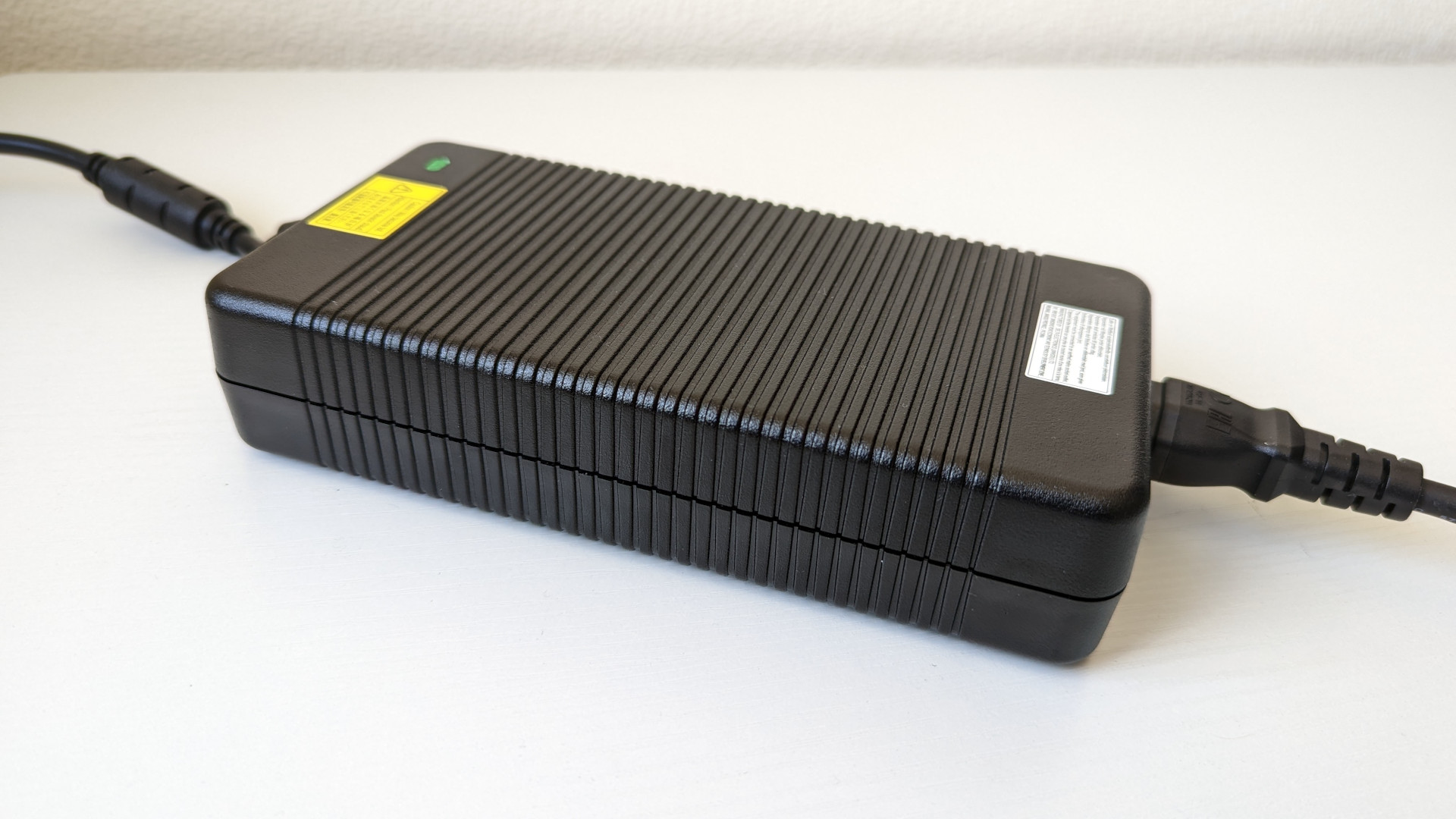The AOC AGON Pro AG274QXM gaming monitor is one of the few mini LED displays available on the market today and the first one I used. While this technology can’t compete with more expensive OLED offerings, even with full local dimming, I’m really impressed with the HDR sound quality compared to many competitors.
I’ve been testing the AG27QXM for over a month now and it’s been a pretty positive experience, especially when it comes to HDR gaming. While I think most people would be happy to have one in their setup, there are a few issues you need to be aware of before spending any money on it.
| Advantage | the least |
|
|
Design
Speaking about the look and design of the AGON Pro AG274QXM AOC, I must start by talking about its annoying stand. Its three legs take up way too much space on my gaming desk (35cm to be exact), taking up more space than the already massive Alienware AW3423DW.
It clouded my immediate screen experience and continues to bother me even after getting used to it for over a month. While AOC isn’t the only manufacturer using this design for gaming monitor mounts, I really hope to see the other side of this trend sooner rather than later. I will say that I am at least thankful that it holds up admirably to the AG274QXM’s heavy plastic chassis, not to mention wobbling.
Unfortunately, my complaints about the stand don’t end there. It baffles me how anyone thought it would be a good idea to put a cable management cutout under the logo projector. Not only is it so low that you end up not being able to properly hide screen spaghetti and USB cables if you’re using the monitor at a certain height, but it can also mess up the projected image. While the obvious solution to this problem is to stop using the projector, the question is, why turn it on?
With all that in mind, I recommend VESA mounting the AG274QXM to a wall or monitor arm if possible. However, the kickstand offers just the right amount of tilt, swivel, swivel, and height adjustment if you stick to it. Regardless of its mount, the 27-inch display should look good next to your gaming PC thanks to its narrow bezels and understated, professional-looking matte black chin.
I only wish AOC would adopt a similar minimalist philosophy when designing the rear of the AG274QXM. Instead, we found six angular RGB address bars that seem like unnecessary inclusions, especially as they fade when bright images appear on the screen, even in a dark room. To be honest, I think most people would prefer it to be cut due to the lower power consumption and lower price of what is already an expensive monitor.
At a minimum, removing them can help reduce the size of the huge power supply that comes with the monitor. Seriously, it’s a whopper.

The functions
While AOC may have failed in many places with the design of the AG274QXM, the company has done a much better job with its feature set. In terms of connectivity, this monitor comes with a plethora of ports, with the USB connection in particular being the standout.
Of the four USB 3.2 Type-A ports, which are fast enough on their own, one (marked yellow) also supports fast charging. With this monitor, you also get a USB-C 3.2 port that supports DisplayPort output, upstream, and power delivery up to 65W, so you can connect your laptop and charge its battery through a single cable. Plus, the included KVM switch makes it easy to use your gaming keyboard and mouse between any devices connected to the display.
In terms of display connectivity, the AG274QXM has two HDMI 2.0 ports and one DisplayPort 1.4 port, the latter being the only one capable of using the monitor at its native resolution and maximum refresh rate. HDMI 2.1 is becoming more and more common in gaming monitors, so it’s a shame AOC decided not to include it (presumably to save money).
The built-in speakers are as good as expected, but I guess they’re good to have in a pinch for casual consumption of content like YouTube videos. However, you’ll get a much better experience with a better gaming headset that can be connected to the included 3.5mm port rather than through your computer, if you prefer.

One of my favorite things about another AOC monitor, the Agon Pro AG275QXL, was its “Quick Switch” puck, and I’m glad it’s back on this model. Although the nipple button on the back of the case is handy enough to use when I need to access the OSD, I prefer to use the dial instead, as all of its buttons have a satisfying click.
Speaking of the OSD, it’s easy to navigate, but it only has a few options that I think should be enabled by default. While I understand that some may like a super saturated look to make their favorite games more punchy, I’m a sucker for precision, so I naturally lean towards “sRGB” color temperature when using the AG27QXM in SDR. . More importantly, though, I find it strange that local dimming isn’t enabled by default, as it can help improve picture quality even when you’re not consuming HDR content.
Finally, I would have preferred AOC to have chosen a well-tuned overdrive mode rather than three presets you can switch between. I left the default “Off” because I noticed reverse halo artifacts when using the “Medium” or “High” setting.

Performance
Without further ado, let’s get to the heart of what matters most in a gaming monitor: the screen. The AG27QXM shares many similarities with many other competing options on the market, such as a 1440p resolution, 170Hz refresh rate, 1ms response time, and 27-inch screen size. However, behind its panel lurks cutting-edge technology that helps elevate it above its brethren.
I am referring, of course, to its mini LED backlight and support for full local dimming. For those unfamiliar with these technologies, they’re essentially the closest thing to individually addressable pixels found in OLEDs without the hassle of burning out. However, they do have their downsides, which I’ll get to later, but first I want to give them some well-deserved praise.
Loading up Doom Eternal for the first time with HDR enabled, I still have to look away for a moment as id Software’s white intro fills the AG27QXM’s screen. Its VESA DisplayHDR 1000 certification is no joke, and that level of brightness really helps make flares in my arsenal or impending fire from enemies sound like an SDR presentation it just can’t match. However, it also gets surprisingly bright in the standard dynamic range.
In terms of color spaces, the AG27QXM has excellent color accuracy, covering 155% sRGB and 116% DCI-P3. It doesn’t stop there though, as it can display 125% of the Adobe RGB color space and 127% of the NTSC color space. While I can’t comment too much on its suitability for creative workloads, it does come with removable monitor shutters to combat glare.
However, the AG27QXM does have some limitations. As expected from IPS panels, the 1000:1 contrast ratio leaves a lot to be desired, especially when compared to VA or OLED alternatives. That’s not to say it’s bad, but if that’s a priority for you, then perhaps something like the Samsung Odyssey Neo G7 will suit your needs better.
However, the biggest drawback for me personally, as someone who regularly uses an LG OLED TV, is the presence of ghosting due to the number of local dimming zones present in the AG27QXM. While the 576 local dimming zones do a good job of making this unwanted effect all but disappear in most typical gaming scenarios, it’s simply not enough to mask it in dark scenes.
Overall, I think the AG27QXM delivers great results and is still one of the best LCD gaming monitors I’ve used for HDR gaming. It also performs well in SDR games, but the highlight here is its ability to deliver a very good high dynamic range experience, especially when there are so many competitors.

Verdict
You can usually find the AOC Agon Pro AG27QXM for around $1,000 / £850, which unfortunately and understandably puts it out of reach for many. That said, I think that’s a pretty reasonable asking price for something that effectively sits in a happy middle ground between cheaper HDR competitors and more expensive OLED offerings.
Design issues aside which can be largely fixed by installing VESA, the AG27QXM should be on the short list of anyone who wants to try HDR gaming without worrying about burn-in. AOC has done an amazing job with this monitor and has avoided a lot of the pitfalls that come with first-gen products, and I’m excited for the future of gaming monitors.
AOC AGON Pro AG274QXM
Its mini-LED backlighting and 576 zones of local dimming provide great visuals compared to standard LCDs for really good HDR, but it can’t quite match inky-black OLEDs and its kickstand is incredibly intrusive.
Source : PC Gamesn

